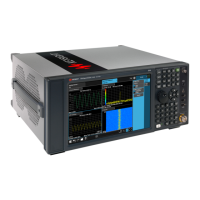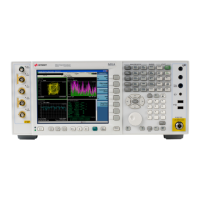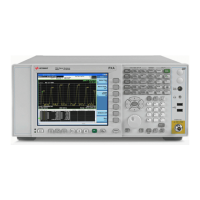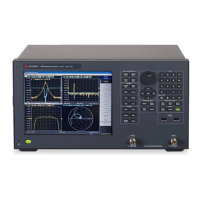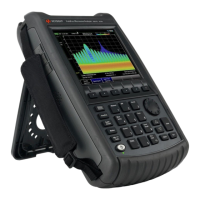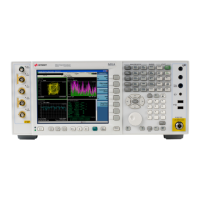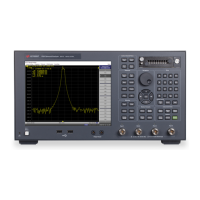Remote Interface Reference 4
Keysight 34420A User’s Guide 147
MEASure? Example
The following program segment shows how to use the MEASure? command to
make a measurement. This example configures the meter for voltage
measurements on channel 1 using autoranging on the input signal, automatically
places the meter in the “wait-for-trigger” state, internally triggers the meter to
take one reading, and then sends the reading to the output buffer.
MEAS:VOLT:DC? AUTO,MIN,(@FRONt1)
bus enter statement
This is the simplest way to take a reading. However, you do not have any flexibility
with MEASure? to set the trigger count, sample count, trigger delay, etc. All
measurement parameters except function, range, and resolution are preset for
you automatically (see the table on page 143).
CONFigure Example 1
The following program segment shows how to use the READ? command with
CONFigure to make an externally-triggered measurement. The program
configures the meter for dc voltage measurements. CONFigure does not place the
meter in the “wait-for-trigger” state. The READ? command places the meter in
the “wait-for-trigger” state, takes a reading when the Ext Trig terminal is pulsed,
and sends the reading to the output buffer.
CONF:VOLT:DC 10, MIN, (@FRONt1)
TRIG:SOUR EXT
READ?
bus enter statement
CONFigure Example 2
The following program segment is similar to the example above but it uses
INITiate to place the meter in the “wait-for-trigger” state. The INITiate command
places the meter in the “wait-for-trigger” state, takes a reading when the Ext Trig
terminal is pulsed, and sends the reading to the meter’s internal memory. The
FETCh? command transfers the reading from internal memory to the output
buffer.
CONF:VOLT:DC 10, MIN, (@FRONt1)
TRIG:SOUR EXT
INIT
FETC?
bus enter statement

